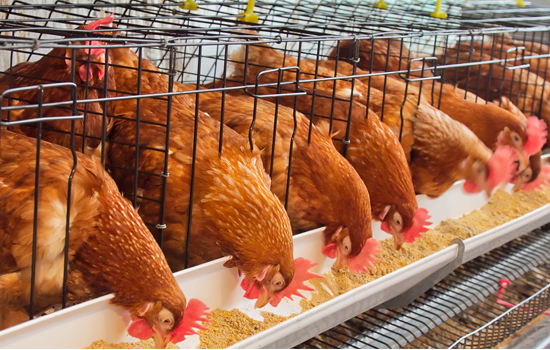How to scientifically raise chicks using poultry farming equipment?
- font size decrease font size increase font size
Feeding of chicks is a stage that every breeder of broiler chickens has to go through. The chicks refer to the flocks that were born soon. The chicks have poor physiology and low resistance. In order to obtain a better survival rate, farmers need to be carefully and scientifically raised to ensure the survival rate of the chicks and lay a solid foundation for adult chickens. The authors refer to the recommendations of poultry equipment manufacturers and farmers to teach farmers the key points of scientific breeding of chicks.
1. When the chicks are transported to the brooding house, work on boiling water and food. The boiling water and food for chicks should be based on the principle of first boiling water and then feeding. After the chicks are out of the shell, some of the yolks have not been absorbed. The drinking water of the chicks can accelerate the metabolism of this nutrient. Feeding the chicks should be done: the chicken feed is nutritious, digestible, and palatable. The full price of the chicken feed is appropriate, the trough is sufficient, and the feeding frequency is gradually reduced according to the age. Because the digestive function of the chick is poor, it can not be overeating. If it is overeating, it will cause indigestion, causing digestive tract disease.
2. Control the ventilation, light and disease in the house

(1) Control ventilation: reasonable ventilation of the chicken house can discharge the harmful gas inside the chicken house outside the chicken house. Let the fresh air enter the house, so that the house can reach a fresh and comfortable environment, so that the chicks can grow healthily.
(2) Control lighting: Reasonable light can promote growth and bone development, prevent diseases and improve production performance. When the chicks are 3 weeks old, they can put the chicks outside the house at noon on sunny days (the climate is warmer), soaking the sun and exercising for 1-2 hours. This will not only promote the growth and development of the chicks, but also promote the chicks to gradually adapt to the natural environment.
(3) Controlling the occurrence of diseases: young chicks are small and have poor disease resistance. Once an epidemic occurs, the infection is fast, the mortality rate is high, and the loss is large. Therefore, farmers are required to do the disinfection work of the chicken house and the immunization work of the chicken.
3. Control the temperature, humidity and density inside the house. The right temperature is the key to raising chicks:
Generally, chicks have temperature requirements of 34 to 35 ° C for 1 to 3 days, 32 to 33 ° C for 4 to 7 days of age, and 2 to 3 ° C per week for 7 days of age until 20 ° C. After about 6 weeks, the chicks can adapt to the natural environment. Maintain proper humidity in the chick house: the humidity in the brooding house is too high or too low for the growth and development of the chick. The ideal humidity is 70% to 75% of the relative humidity in the first week, and 65% in the second week, and 55% to 60% as much as possible from the third week. Also pay attention to the density of the chicks: reasonable stocking density is an important condition to ensure the health and growth of the flocks. Generally, it is 30/m2 at the first week and 25/m2 at the second week, the third week. The time is 20/m2, 15/m2 at the 4th week, and about 10/m2 at the 5th week. In addition, the stocking density of chicks must be flexibly controlled according to the variety, season, gender, and structure of the house, ventilation conditions and feeding methods.
The above is the author's focus on the farmers, the use of poultry farming cages for scientific breeding of chicks. It is hoped that farmers can focus on this, which not only can reduce the incidence of disease in chicks, but also effectively improve the survival rate of chicks, which will also help to increase the breeding efficiency of farmers.

